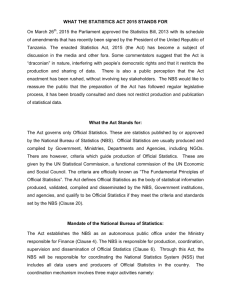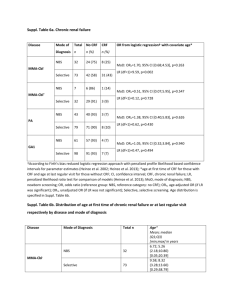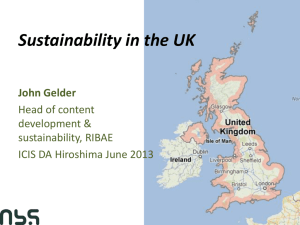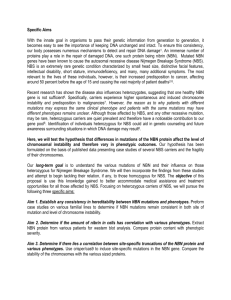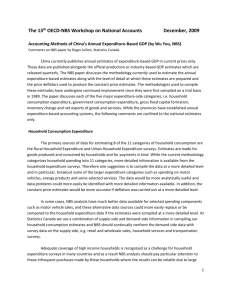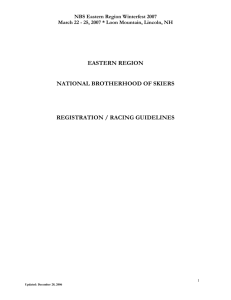file - BioMed Central
advertisement
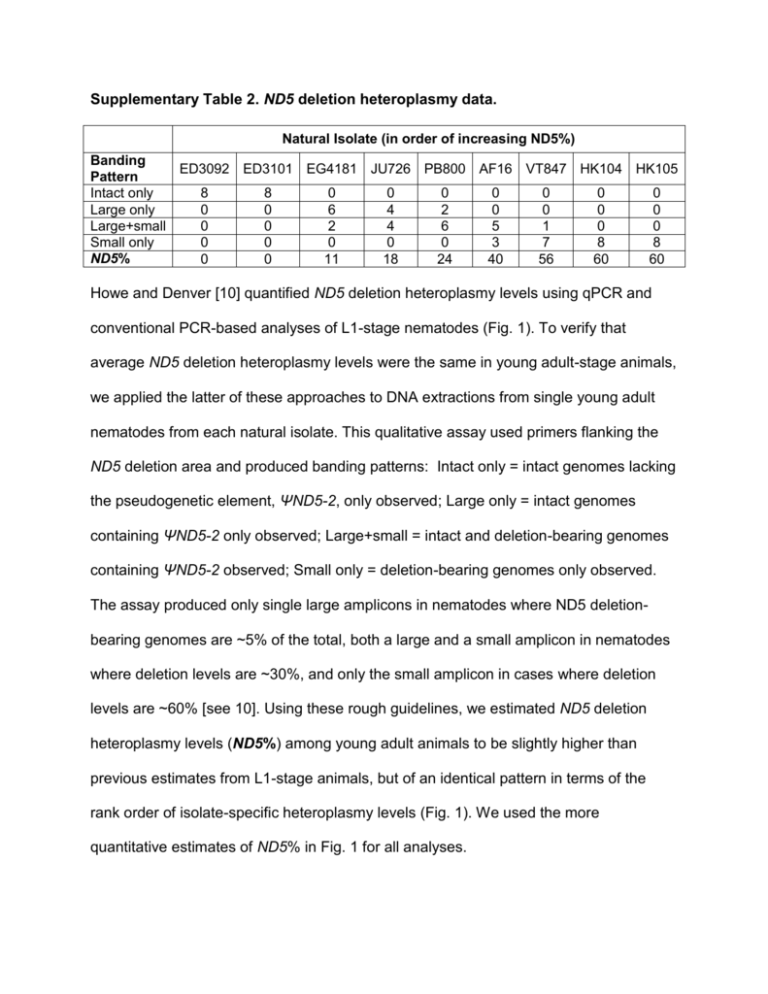
Supplementary Table 2. ND5 deletion heteroplasmy data. Natural Isolate (in order of increasing ND5%) Banding ED3092 ED3101 EG4181 JU726 PB800 AF16 VT847 HK104 HK105 Pattern Intact only 8 8 0 0 0 0 0 0 0 Large only 0 0 6 4 2 0 0 0 0 Large+small 0 0 2 4 6 5 1 0 0 Small only 0 0 0 0 0 3 7 8 8 ND5% 0 0 11 18 24 40 56 60 60 Howe and Denver [10] quantified ND5 deletion heteroplasmy levels using qPCR and conventional PCR-based analyses of L1-stage nematodes (Fig. 1). To verify that average ND5 deletion heteroplasmy levels were the same in young adult-stage animals, we applied the latter of these approaches to DNA extractions from single young adult nematodes from each natural isolate. This qualitative assay used primers flanking the ND5 deletion area and produced banding patterns: Intact only = intact genomes lacking the pseudogenetic element, ΨND5-2, only observed; Large only = intact genomes containing ΨND5-2 only observed; Large+small = intact and deletion-bearing genomes containing ΨND5-2 observed; Small only = deletion-bearing genomes only observed. The assay produced only single large amplicons in nematodes where ND5 deletionbearing genomes are ~5% of the total, both a large and a small amplicon in nematodes where deletion levels are ~30%, and only the small amplicon in cases where deletion levels are ~60% [see 10]. Using these rough guidelines, we estimated ND5 deletion heteroplasmy levels (ND5%) among young adult animals to be slightly higher than previous estimates from L1-stage animals, but of an identical pattern in terms of the rank order of isolate-specific heteroplasmy levels (Fig. 1). We used the more quantitative estimates of ND5% in Fig. 1 for all analyses.




